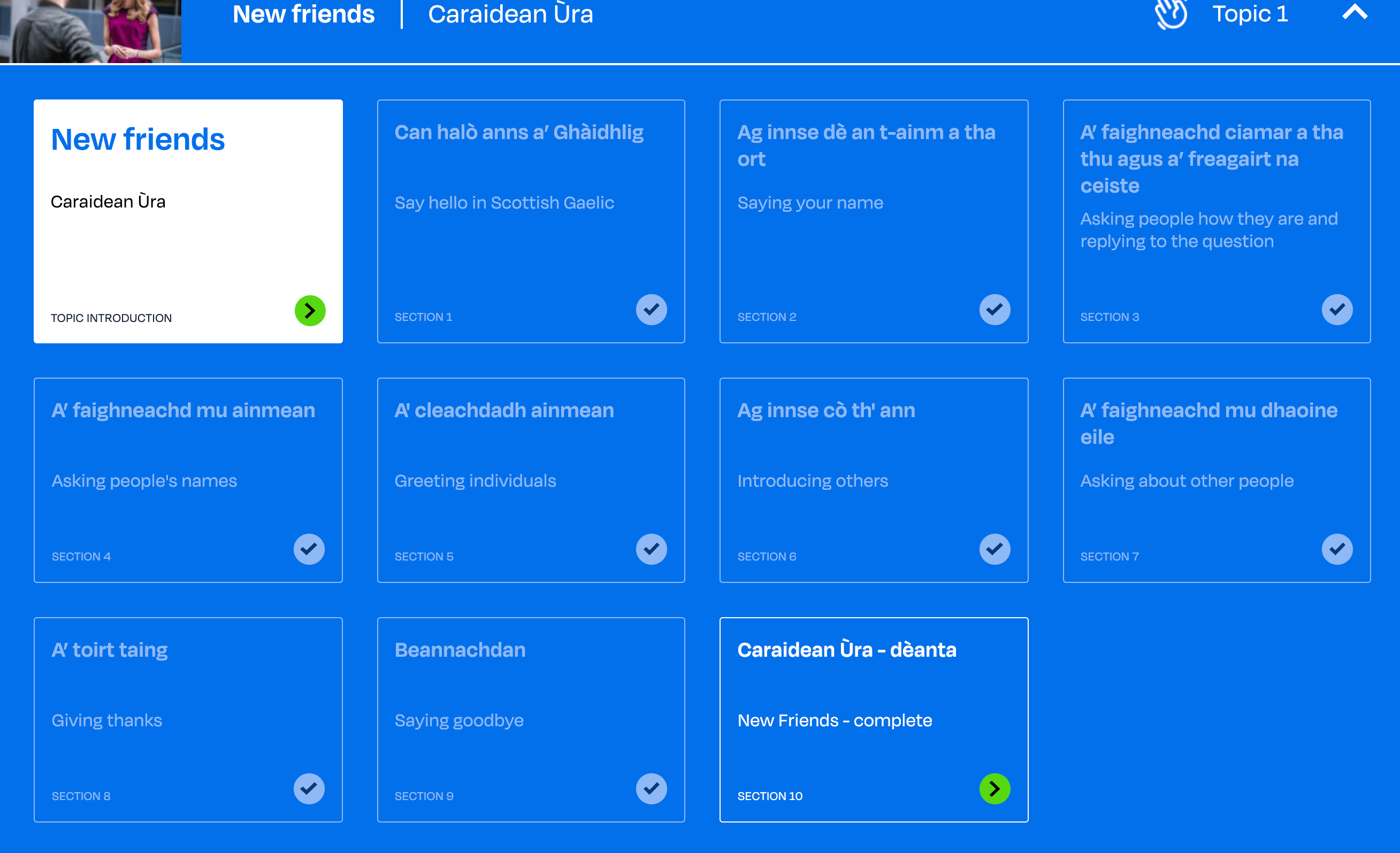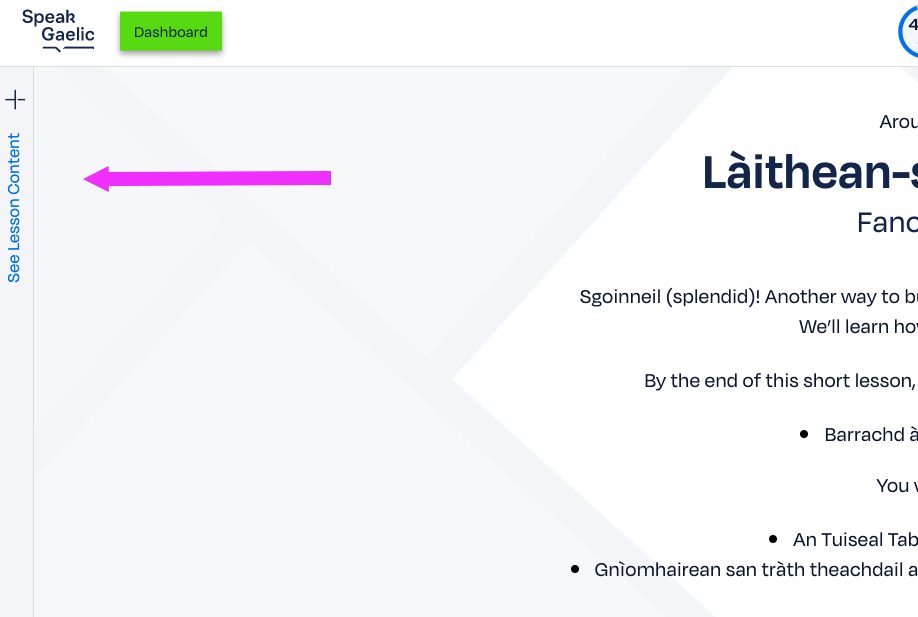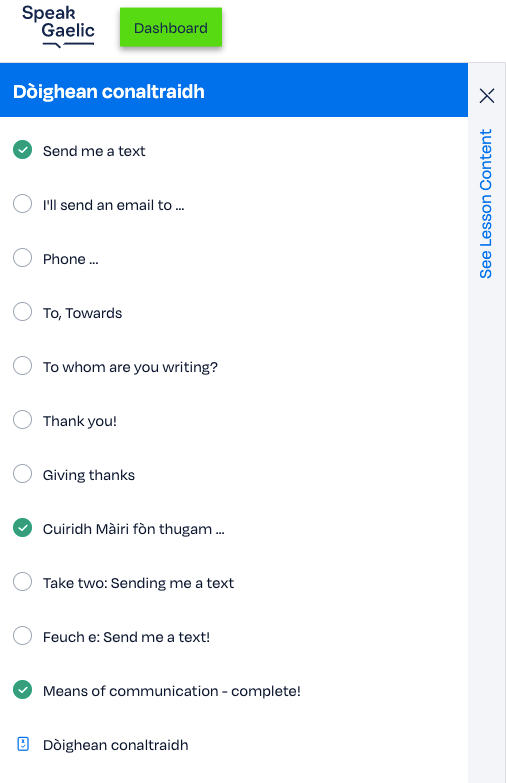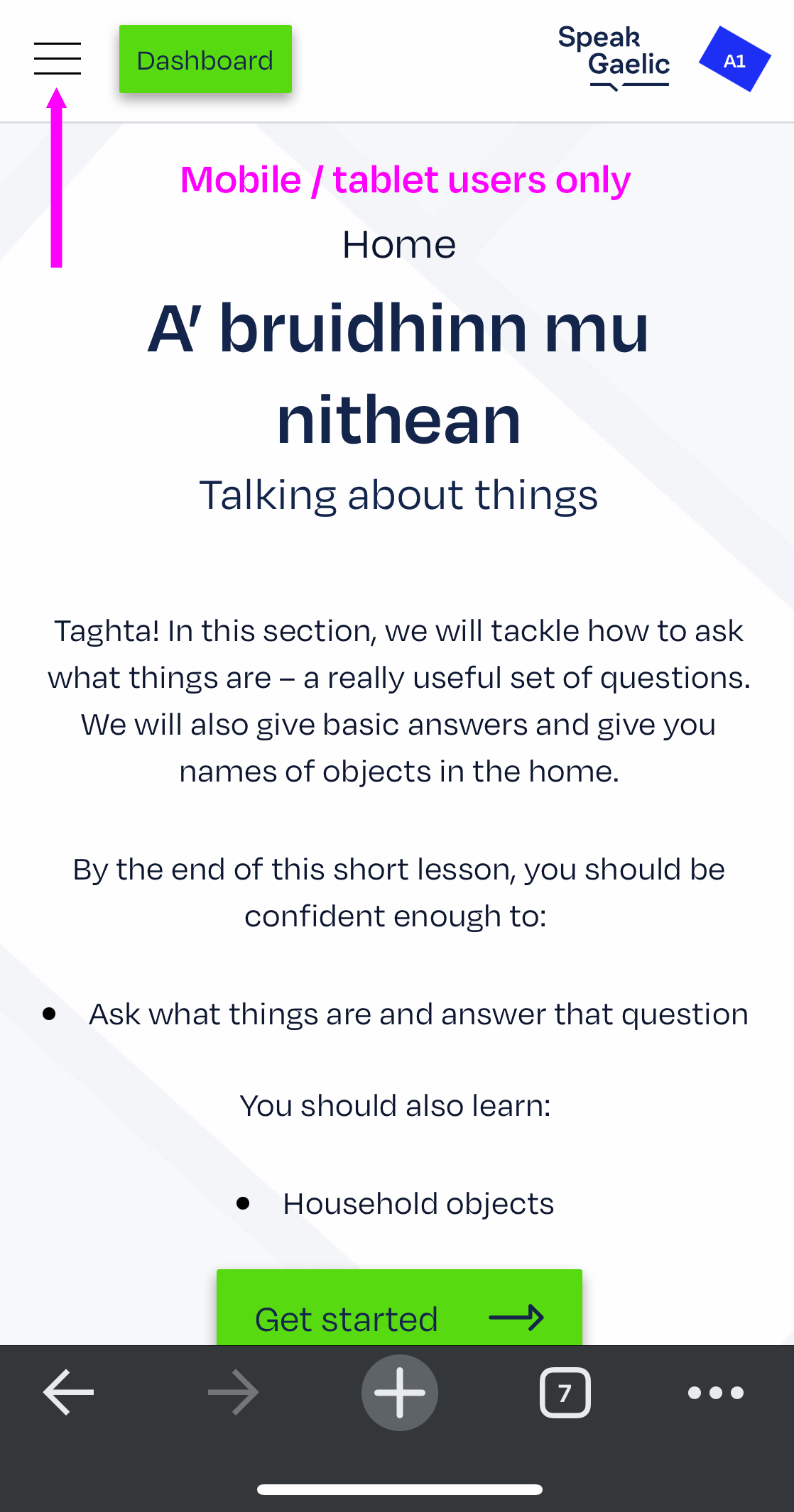Bilingual transcription: Ceann thall
Bilingual transcription: Far end
Watch this clip where Joy gives us some of her useful tips and favourite phrases.
Town and place names air a’ Ghàidhealtachd are for the most part Gaelic in origin. And as such, some are quite descriptive. But sometimes the results are unexpected.
Let’s look at one in particular: Kingussie. Could there be a royal connection?
It certainly sounds like something royal when we say it in English, but in Gaelic the real meaning becomes clear:
Ceann a’ Ghiùthsaich, Ceann a’ Ghiùthsaich.
The first part, Kin, is for ceann, head, but ceann can also mean end, headland or point.
You can also use ceann to say where things and places are located:
ceann shìos is the lower end, ceann shìos,
agus ceann shuas is the upper end, ceann shuas.
Both of these are quite logical as are the next two:
ceann thall is the far end, ceann thall, and
ceann a–bhos is the near end or this end, ceann a–bhos.
We’ll come back to the meaning of Ghiùthsaich in Ceann a’ Ghiùthsaich shortly but before then, let’s look at a few other place names.
Inbhir Nis, is Inverness, Inbhir Nis. You’ll find Inbhir in many names. It means an estuary or the mouth of a river. And so Inbhir Nis is the mouth of the River Ness.
Moving to An t–Eilean Sgiathanach and An t–Àth Leathann, Broadford. An t–Àth Leathann comprises àth, a ford, and leathann, broad, so it’s the broad ford, An t–Àth Leathann.
Heading south, and once famous for its slate, is Baile a’ Chaolais, Ballachulish. Baile you’ll know is a township or a village and Caolas is a kyle, channel or narrows, giving us the village at the narrows, Baile a’ Chaolais.
The LearnGaelic dictionary features definitions of many place–names. And I’d recommend you have a look at some of them – when you do, a map of the Highlands and Islands will never look the same again!




